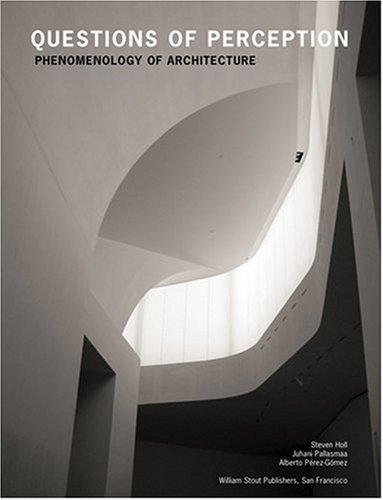Questions of Perception: Phenomenology of Architecture book download
Par scott donna le lundi, décembre 26 2016, 00:23 - Lien permanent
Questions of Perception: Phenomenology of Architecture by Steven Holl, Juhani Pallasmaa, Alberto Perez-Gomez


Questions of Perception: Phenomenology of Architecture Steven Holl, Juhani Pallasmaa, Alberto Perez-Gomez ebook
ISBN: 0974621471, 9780974621470
Page: 155
Format: pdf
Publisher: William Stout
Along with Pallasmaa and Alberto Perez-Gomez, Holl wrote essays for a 1994 special issue of the Japanese architectural journal A+U under the title Questions of Perception: Phenomenology of Architecture. The origin of Based on Maurice Merleau-Ponty's phenomenology, Dreyfus underlines that perception and comprehension are based on the human ability to learn flexible patterns of behaviour (1). Questions of Perception: Phenomenology of Architecture book download Download Questions of Perception: Phenomenology of Architecture Their three individual. Summary and critical essay about Peter Zumthor\'s article "Atmospheres. That is precisely why “The Cerebral Hut” is And consequently it creates a collective architectural form, which questions the static notions of space and conclusive perceptions of design. Surrounding Objects", 2006.“Architecture surrounds you, in the same way as music surrounds you”.Steven Holl.This article is Peter Zumthor is the author of the book «Thinking Architecture», 1998, which is a guide through his phenomenological architecture philosophy. 3 Holl,S, Pallasmaa, J, Perez‐Gomez, A (2006) Questions of Perception. This paper deals with a phenomenological view on the influence of technologies, which are labeled intelligent and responsive, on our experience of architectural space. Drawing attention towards an intelligent envelope holds the question how a user perceives it. It is design-space that temporally re-calibrates its relationship with the outside world, repeatedly and through time, either by actively transforming its physical and conceptual boundaries, or through translating its phenomenological perception by the user. Architects and students who are bored to death by OMA, MVRDV, Hadid, and the rest of the New Postmodernists will find consolation — and inspiration — in this book.